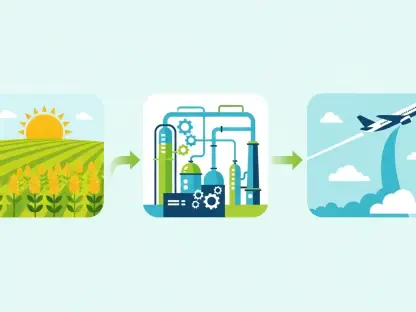The Oil Market Report for March by the International Energy Agency indicates a downturn in crude oil prices in February and early March due to growing economic concerns and global oil demand growth amid escalating trade tensions. OPEC+’s decision to start unwinding production cuts in April exacerbates the situation. Discussions about an initial ceasefire and potential peace deal in Ukraine provide a backdrop to these economic factors, contributing to an $11 per barrel decline in ICE Brent futures over eight weeks, reaching near three-year lows of around $70 per barrel.
Economic Factors Impacting Oil Demand
The macroeconomic landscape underpinning oil demand projections has worsened over the past month, primarily due to heightened trade tensions between the United States and other countries. New US tariffs and retaliatory measures have increased macro risks. Recent oil demand data fell short of expectations, prompting a slight downgrade of growth estimates for the fourth quarter of last year and the first quarter of this year to about 1.2 million barrels per day. Despite this, global oil demand growth is forecasted to average slightly over 1 million barrels per day this year, compared to 830,000 barrels per day last year, aided by lower oil prices. Asian countries, especially China, will drive nearly 60 percent of these gains, with petrochemical feedstocks contributing entirely as refined fuel demand hits a plateau.
The economic challenges and trade uncertainties have also impacted investment decisions in the oil and energy sectors, with companies reevaluating their strategies amid fluctuating demand and prices. This reevaluation affects not only production rates but also future exploration activities. The global economic slowdown, coupled with ongoing trade disputes, adds layers of complexity to the already volatile oil market landscape. For countries heavily dependent on oil exports, like Saudi Arabia and Russia, these factors could lead to significant shifts in their economic and geopolitical strategies, influencing global energy policies and alliances.
Shifts in Global Oil Supply
Global oil supply is already increasing, spurred by the winding down of OPEC+ production cuts. In February alone, supply rose by 240,000 barrels per day, with Tengizchevroil’s Tengiz expansion project pushing Kazakhstan’s output to new highs. Meanwhile, Iran and Venezuela also upped production ahead of tougher sanctions. Venezuelan supply is anticipated to fall from April, coinciding with Chevron’s expiring General License to operate in the country. The actual boost from the OPEC+ production cuts unwinding is likely less than the nominal 138,000 barrels per day.
The US is currently the leading producer, with expected supply growth throughout the year, followed by Canada, Brazil, and Guyana. Imminent US tariffs on Canada and Mexico might affect the flow and price of imports, as these countries accounted for about 70 percent of US crude oil imports last year. The latest sanctions on Russia and Iran haven’t significantly affected loadings yet, although some buyers have reduced purchases. This dynamic creates a complex web of geopolitical interactions that complicate anticipating market trends and responses.
Efforts by OPEC+ to manage production levels while responding to global economic and political pressures highlight both the unity and divisions within the group. The balance between maintaining stable oil prices and securing market share becomes increasingly delicate. Discrepancies between production targets and actual output could create friction among member states, potentially influencing future policy decisions. As OPEC+ monitors global demand signals and adjusts its strategies, the international oil market remains on high alert for abrupt shifts in supply and pricing structures.
Future Market Outlook and Uncertainties
The International Energy Agency’s March Oil Market Report highlights a decline in crude oil prices during February and early March, spurred by mounting economic worries and an increase in global oil demand growth, all amid rising trade tensions. The situation worsened when OPEC+ decided to lift production cuts starting in April. Additionally, ongoing talks about a possible ceasefire and peace deal in Ukraine are adding context to these economic factors, contributing to an $11 per barrel drop in ICE Brent futures over an eight-week period. This has resulted in prices nearing three-year lows, hovering around $70 per barrel. The combination of these elements has created a complex and challenging environment for the oil market, reflecting the interplay between geopolitical events, production policies, and economic concerns. The global energy landscape remains in flux, with all these factors likely to influence market dynamics in the coming months.









